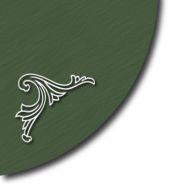The Liturgical Books - An excellent illustrative guide to how these books are used may be viewed here.
The Hours
Great Vespers
Daily Vespers (outside of Lent)
The Divine Liturgy
- The Acts of the Apostles
- The Midnight Office
- The Cross Procession
- Paschal Matins
- The Paschal Hours
- The Divine Liturgy
The Episcopal Divine Liturgy
The General Moleben...this will be prepared shortly
The Processional Moleben...this will be prepared in time for the Feast of St Elisabeth sometimes known as a Cross Procession
A Short Confession... A short form of the confession suitable for during the Hours or the Vigil or just before the Holy Liturgy. This service is in English but with some parts in Russian. A clearer version for penitents in Russian can be found here. It is based on the summary of the Confession by St Demitri of Rostov.
Service of Confession... The full service of the Rite of Confession conducted as a seperate service.
Priest's Service Book. Liturgy of St John Chrysostom. Church Abroad Texts with rubrics A Sluvzevnic prepared with English texts.ideal for printing off as an Altar copy.
Peoples' Service Book. Liturgy of St John Chrysostom in Russian and in English. This can be printed and stapled together. These are not Church Abroad Texts but nevertheless may be useful for Russian speakers in particular to be able to follow the service.
Altar Book of the Liturgy of the Presanctified Gifts. Church Abroad Texts. A briefer version of the Presanctified Liturgy can be downloaded from here.
The Service of the Typika for a Sunday with notes for the Reader and if a choir or priest is present.
A shortened Moleben to St Nicholas for use on a Sunday immediately after the Liturgy.
A General Moleben to St Winefride for use on Pilgrimage to her Shrine in Holywell
An Akathist to St Elisabeth can be downloaded here. We use this on a number of occasions in weekday services on a Wednesday evening
A General Moleben of St Werburgh for use on Pilgrimage to her Shrine in Chester
The Divine Liturgy of St James with rubrics for a priest serving this Liturgy without a deacon. This text is based upon a text in use in ROCOR since the 1930's supplied to me in a typed manuscript with notes by Fr Alexis, Hegumen of the St Edward Brotherhood, Brookwood. The guidance notes for the liturgy were originally in Fr Alexis' handwriting. A PDF of the Hymn Let all mortal flesh keep silence can be found here.
Sometimes the parish has a visiting priest if Fr Paul is away. This section will give some guidance if Fr Paul is away for any length of time.
The reserved sacrament (a rather Latin description of the Holy Mysteries reserved for the sick) is kept in a vessel on the Holy Table. It is described as a tabernacle and normally consists of a small model of a church or a metal structure with four columns and a drawer. Inside the drawer are particles of the most precious Body and Blood of Christ.
Each partical is a small cube which has been dried after being intincted with the precious Blood of Christ. If the drawer is empty, please follow these instructions.
- At the next Liturgy save some of the "NI" or "KA" portion of the Lamb
- Cut this portion into cubes as you would for preparing particles for Holy Communion.
- Have an extra discos or plate ready to recieve these newly cut particles of the precious Body.
- Lay out onto the plate all the particles you have cut in rows separately from each other.
- Now take the spear that you have been using and place it in the cup so that you can intinct each particle.
- Repeat until you can see that all the particals have been pierced with the spear and have some precious Blood.
- Now place the star over these and place a chalice veil over it.
- Place the discos or plate with the intincted particles still covered to the right of the tabernacle on the Holy Table.
- Leave these for a few days to dry. (Some bake them)
- Once they are dry and hard, place them carefully into the drawer of the tabernacle.
- Carefully cleanse the discos or plate as you would at the end of the Liturgy,
Fast, if you can, before taking out Holy Communion in case you have to consume the gifts.Only take enough with you for the number of sick communicants, Take a flask of hot wine and water mixed together and some Antidoron which is still fresh and soft (if you can). When you arrive, open the carrying set. Open the red cloth inside and place the small chalice in the centre. Fill it with the hot wine and water from the flask, Then, using the spoon, place one particle into the chalice from the little box (pyx) inside the carrying set so that it can soften whist you do the service. Place the little spoon horizontally onto the chalice. When you are ready, simply adminster the precious Body and Blood to the faithful person. Some ask the communicant to consume the contents of the chalice, others do so themselves, cleansing the spoon. They give the communicant hot wine from the flask in a cup and some antidoron to cleanse their mouths. Take some anoining oil with you in case they are unable to receive Holy Communion.





































